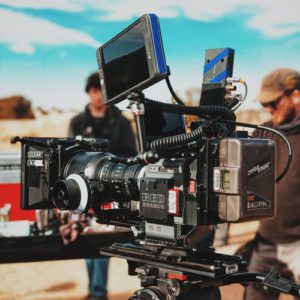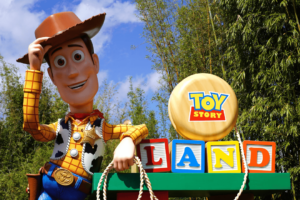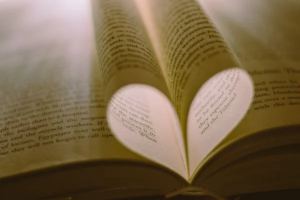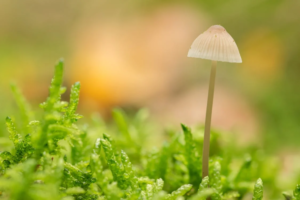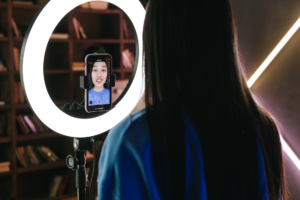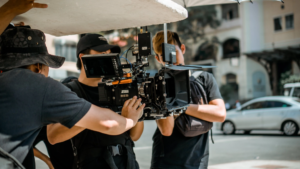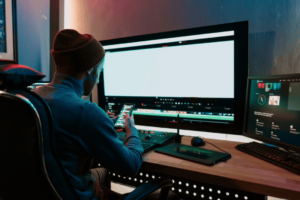Uncopyrighted music is anything that does not belong solely to the original creator. In most cases, an interested party can gain authorization for use by paying a one-time charge. Music that is not copyrighted can be found in the public domain, under creative commons licenses, or in royalty-free music libraries. You can use public domain music without permission or payment as it is not protected by copyright.

Copyright rules protect musical compositions for seventy years after the original author’s death. After those years have passed, the songs become unlicensed music, and anyone interested can copy, distribute, and perform them. A license protects the music created with Creative Commons, but the terms of the claims differ. Users must credit the song’s original creator when sharing it under a Creative Commons license. Some permissions allow for redistribution as long as the music is kept in its original form, while others allow remixing.
What is Royalty-Free Music?
You can use Royalty-free music without paying royalties or continuing payments to the composer or owner of the intellectual property. A one-time cost is required to obtain a music license. Under the terms of this license, you can use the music in a specific way in a project. The addition of royalty-free music to personal and commercial ventures can be beneficial. YouTube videos, films, TV shows, wedding videos, podcasts, and advertising are examples of such undertakings. All of this stands in stark contrast to copyrighted music, which you hear on the radio. Copyrighted music necessitates the acquisition of multiple music licenses from diverse sources, followed by payment of royalties to the original creator.
Uncopyrighted Music for Youtube
As brilliant content creators know, music is essential for a successful YouTube channel. Unlicensed music can help you brand your channel and make you stand out uniquely. Consider your content’s topic matter and tone before searching for music that fits. If you talk a lot in your videos and don’t want the music to distract viewers, go to the “Advanced” filter and select “Instrumental Only” to get lyric-free background music. Primarily, you are free to utilize a specific list of music in your video. These are some of them:
- National anthems of the various countries
- Anonymous works (folk art)
Due to the expiration of their term of validity, compositions are no longer protected by copyright.
With hymns, everything is more or less plain. But how do you tell whether a long-dead author’s musical piece has become a folk treasure and whether a cherished tune has no author?
For this reason, the creators of the video hosting site YouTube have built an enormous phono library, which gathers all information about musical compositions and their authors whose rights are protected by law.
The first step in determining whether your music has copyrights on YouTube is to check the service’s music library for information about the song. Checking necessitates:
- Go to the YouTube music library and type in the track’s name.
- If the indicator is set to 0, the music is likely not free to use.
![]()
This method of checking is convenient, but it will soon become inaccessible because the new version of YouTube’s creative studio does not include this feature, and the classic version will disable it shortly.
The classic check of the struggle is the second approach to verifying music for copyrights on YouTube. To do so, you will need to create a new channel on the video hosting site, upload a video with the chosen music, and then wait. If the copyright is infringed upon, you will receive a notification.

- Of course, this verification approach isn’t efficient. It is time-consuming, but if there is a copyright violation, the video will have to be recreated, which is also inconvenient.
Best Uncopyrighted Music on Youtube
Copyright Infringement on Youtube
Is it worthwhile to investigate whether the music is copyright protected or if you may freely utilize it in your YouTube video? So, let’s take a look at how your love for a “forbidden” song can endanger you.
Sanctions enforced by the YouTube video hosting site, which the developer can impose:
- To turn off the video’s soundtrack
- Impose restrictions on the distribution of videos in several countries
- A ban on demonstrations on specific platforms
- Monetize films by incorporating paid advertisements for the profit of the intellectual property owner
- Altogether disable the video
- Delete the video in which the prohibited music was played
- Remove all of the videos from your YouTube channel
- Stifle the account and all of its channels
- The creation of new channels is prohibited
- Monetization is the most prevalent metric. It permits the copyright holder to consent to the use of a copyrighted musical work to earn more money.
- The authorities have imposed sanctions. Everything, in this case, is subject to the laws of the individual state. This might include blocking Internet projects, different penalties, community work, or even an actual prison sentence for piracy.
It is worth noting that even the smallest measures taken in response to copyright infringement can have far-reaching implications. For example, even repairing a video without sound incurs additional costs, which are unlikely to make the artist happy.
Copyright Infringement on Youtube
Royalty-Free Music for Youtube
If you have read thus far, you are already aware of the importance of music in the video marketing revolution. Music is an intangible layer of pure emotions that enhances the viewing experience and helps you to transform a mundane clip into a work of art that people will share.
Video bloggers love YouTube because it is the world’s most popular video-sharing site. At the same time, many people try to make something that will set them apart from the competitors, rather than just a music video.
After deciding to include music in their videos, bloggers and channel owners begin looking for the appropriate tracks. They discover great platforms around this time that store vast libraries of royalty-free music. Happy bloggers buy compositions after reading the first couple of phrases on the license page and plan to use them anywhere they can. And it is at this point that the question arises: am I capable of doing this?
Royalty-Free Music Youtube
Using Royalty Free Music on Youtube
First and foremost, you can do it. However, not everything is as straightforward as it appears. YouTube, in reality, has precise regulations regarding the usage of music on the platform. In addition, the platform has tight guidelines for such content, requiring adherence to all copyright holders’ rights.
YouTubers typically employ royalty-free music to have minimal interaction with copyright holders (or none at all). As a result, bloggers can collaborate only with the music library using these tracks, rather than wasting time negotiating with track authors, producers, and other rights holders.
On the platform, almost all commercial compositions are protected by strict laws. YouTube keeps track of any illegal activity and punishes those who harshly break the platform’s rules. Furthermore, such use may lead to legal action against the authors.
Bloggers can avoid such issues by using royalty-free music. However, there are a handful of details to consider. First and foremost, we’re discussing licenses. Different libraries offer different licenses to their patrons. After you’ve decided on a license type, it’s a good idea to double-check with the library’s representatives to see if you can use these tracks for commercial purposes on your YouTube channel. Frequently, if you correctly comprehend the license issue, you will be given a favorable response.
Advantages of Using Royalty-Free Music on Youtube
In addition to the benefits listed above, this approach also has some additional benefits, such as:
Ease of use
When you buy a track from an online royalty-free music library, you almost always obtain a music file in a specific format, which you can easily integrate into your films with only a few clicks. There is no extra useless information, just a track.
Advertising Issue
A specially built YouTube software automatically adds advertisements into videos with commercial music. As a result, your visitors may begin to complain that your films contain too much advertising. You can avoid this difficulty by using royalty-free music.
Pricing Policy
Yes, music from such sources is frequently available at low pricing. Because there are so many platforms and different sorts of licenses on each, it isn’t easy to summarize some average figures. However, it is safe to say that if you have $50 to spend on this, you can get some great music for the rest of your life. In addition, for around $200 a year, some platforms provide an annual membership that includes their music.
Editorial Alternatives
Along with music, several platforms also include various editing tools for selected tracks. For instance, imagine the same track with different effects, loops, fits, percussion, and so on. Thus, having one song with such a set of instruments can be used in various videos.
We are not just talking about following YouTube’s regulations for your good. Aside from you, the composers of music benefit as well. Platforms frequently split half of the revenue generated by their music with the artists that created it. As a result, adopting royalty-free music is the most natural solution that meets the needs of all parties.
How to Use Free Uncopyrighted Music for Other Platforms?
The ways you use uncopyrighted music will vary depending on the project and platform you choose.
Uncopyrighted Music for Twitch
Try adding some uncopyrighted opening or outro music to your live stream if you’re a video game all-star trying to gain more fans. Intro music welcomes viewers into your video’s universe, while outro music gracefully informs viewers that the video is coming to a close. Make an effort to find music that corresponds to the game’s tone you are playing.
Uncopyrighted Music for Streaming
Commercial projects, such as TV shows or films that stream on robust platforms, require music to compete with the vast content available. Use your unlicensed music as a video editing tool. When you time your visual cuts to the pacing and rhythm of the music, you’ll end up with a finished product that’s more likely to keep the viewer involved in the action. When editing an action sequence, for example, pace it such that a loud drumbeat plays every time a punch is thrown. Across all film genres, the same musical editing technique is used.
Best Places to Find Free Uncopyrighted Music
Here are some of the best places to find non-copyrighted and Free Music:
YouTube Audio Library
This site offers free music and sound effects, as well as a simple search function. You will see an “Attribution” dropdown menu where you may filter tracks by whether they’re “Attribution Required” (CC-BY) or “No Attribution Required” (now that you know what this is all about, you can feel like a pro).
If you choose CC-BY music, be sure to copy and paste the credits exactly as they appear. You should not have any trouble using CC-BY on YouTube or anywhere else you submit your film as long as you properly acknowledge the creator.
Here’s a nice video showing how to use the YouTube Audio Library and how to search YouTube for music channels:
Hook Sounds
HookSounds was founded by Alvaro Angeloro and Veronica Viera to produce a trustworthy website with high-quality, hand-picked royalty-free music. Each piece of music on the website is unique. This means you won’t be able to hear HookSounds’ music anywhere else.
Under their use and mention license, you can use the music for personal use for free. This implies you can use it as long as you aren’t “monetizing” your usage. However, for $25, you can have a primary monetization use. This is a reasonable price for high-quality music.
NoCopyrightSounds (NCS)
You can come across this YouTube Channel if you search for “free uncopyrighted music” or “no copyright music” on YouTube. It’s a UK-based popular channel turned a record company that offers free electronic music to independent creators (but not to brands).
All you have to do now is make sure to give credit where it’s due. These tunes are free to use on YouTube and Twitch, including monetized videos! However, if you try to use it on Instagram, Facebook, or Twitter, you can claim copyright.
Free Stock Music
Although the website name appears to be self-explanatory, you may need to reach for your wallet in some situations. Most of the tracks are Creative Commons Attribution Required, although some are “CC-BY-NC” licensed.
Make sure you are aware of the ones you are looking at. Fortunately, if you wish to utilize the tune for monetized films, you can purchase it for roughly $9.
Purple Planet Music
This site has a lot of free Creative Commons music (CC-BY), and all you have to do is give them credit! You may utilize them to monetize your movie, but they only provide you with a 192kbps MP3 file (which should be fine for background music).
If you want a higher-resolution download, you’ll have to pay $8. It’s relatively reasonable!
Take Tones
Taketones features a large selection of music that you may use for free in non-commercial projects like home films and non-monetized YouTube videos. A Free Creative Commons License covers this type of use.
You may also pay for commercial-use tracks or upgrade to a paid monthly service to acquire unlimited tracks for a reasonable price.
Free Music Archive
This site, as the name implies, offers free music, the majority of which is licensed under Creative Commons. Click on the song title and then look at the far right column to see which type of CC it is—and if it’s available for commercial use.
The license information is located beneath the box that displays the number of music downloads.
SoundGator
Sound Gator specializes in sound effects and offers free sound effects for YouTube videos. This is an excellent tool to use if you require specific noises or sound effects in your videos. Button noises, nature sounds, and domestic sounds are all available here. To download the files, you’ll need to create a free account.
Bensound
Every music on this site is published under a creative commons attribution license, which means you only have to give the creator a text credit in your video or the description. You can sort by genre and purchase a pro subscription if you require further functionality.
Looperman
Looperman is a website that offers free loops, sounds, and samples for your YouTube videos, all of which have been posted by individual users. You can use these loops in your YouTube videos by choosing from various genres. To download, you will need to create a free account.
Pond5
Pond5 not only has the world’s largest stock video database, but they also provide royalty-free music! Go to the Music category and search for a specific genre or title on the main page. Select the Public Domain checkbox at the bottom of the filter options. Add the track you want to your cart by clicking on it. To download the track, you must first create an account.
Places to Get Uncopyrighted Music
Conclusion
When it comes to uncopyrighted music, there are two broad categories: the first is public domain music, which includes songs that have been released from copyright protection and are now regarded as free non-copyrighted music. Free licenses protect the second type of music; usually, the artist determines the usage rights for their works. Music can be used and disseminated by anybody without permission in both circumstances. However, certain restrictions may apply in the latter.
